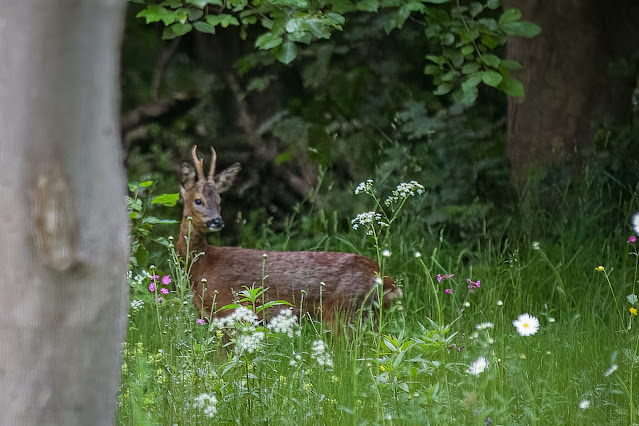2023 has been mostly about mustelids, from weasels and stoats in my garden, to otters nearby, to pine martens in Ardnamurchan, with badgers here and there. Other mammals have been foxes, mice, shrews, voles and even a roebuck in the garden, not to mention rabbits and squirrels. Oh, and a bat I rescued from a pond. Here are some highlights.
My Blog List
Saturday 30 December 2023
Tuesday 26 December 2023
My ladybird year
2023 was my first year of ladybird spotting. It has been fascinating to learn how, where and when to find them and to be able to track down a few rarities, including 5-spot Ladybird and 11-spot Ladybird. The picture above shows the 24 species I have seen so far, listed in taxonomic order as in Helen Roy's book. In the same order, they are:
Heather Ladybird. Rare but I have come across a few, including one on a gravestone, miles from the nearest heather.
Pine Ladybird. Small, widespread and often not on a pine tree. Even on apple trees in my mother's garden.
Water Ladybird. Previously thought to be rare in the North until people started looking. Now it turns up in reed beds everywhere. Very small.
2-spot Ladybird. Despite its name this one is quite variable and comes in two, four and six spot variants (the last two red on black) as well as some others that I have yet to see.
10-spot Ladybird. A deciduous tree specialist and our most variable ladybird. Here are some of the variations I have seen so far. You can click on the photo for a larger view.
Harlequin Ladybird. Non-native but already our most numerous and widespread ladybird. Very variable in size and appearance.
Red Marsh Ladybird. Like the next two, this is one of the "inconspicuous ladybirds", all very small. It is found in wetlands or dune grasses.
There are more to find next year, but most are farther south. I’ll be on the lookout.
Monday 25 December 2023
Thursday 21 December 2023
Growing up fast on OtterCam
Last week the otter cubs and their mother reappeared on the cameras for two nights in a row. They are a month older than their first appearance and already look bigger and more agile.
The cameras also caught an episode of the cubs play-fighting and tumbling into the water. It is a bit disjointed because of the camera positions but fun to watch.

I also managed to retrieve a camera from the culvert after the recent floods. It wasn't well positioned so the view isn't as good as usual but we do get a few glimpses of the cubs. It is a bit fragmented but in the first clip the cub is scared of the culvert and retreats and the mother has to go back to collect it. In the daytime clip later on the cubs really struggle against the current and slippery gate, even though the water level was low.
Having seen where the cubs were playing on the first video I went back to reposition the cameras but they haven't been back since. One of the new camera angles is looking directly at a wood mouse nest hole with the disadvantage that it records dozens of mouse videos every night. However, the camera wasn't the only one watching.
The video shows the views from two cameras separately.
I can't tell from the video whether the owl caught the mouse but I suspect not as a mouse later reappeared and the owl was back two nights later. The second time only the top camera caught it in action but we can see a mouse in its talons as it flew off.
More news on the otter cubs in the new year.
Sunday 17 December 2023
Bohemian rhapsody
This is already a "Waxwing Winter" with large numbers of these Fennoscandian birds having arrived in the autumn and now being seen right across the country. When they first appeared I didn't join the throngs of observers as I have photographed them before and even saw them in my garden in my first winter here. Nevertheless, when I received a tip-off from my friend Tim W about 200 Bohemian Waxwings at the end of my road I thought I should take a look. I walked along the road about an hour after sunrise yesterday to find no sign of them but within a few minutes the flock turned up. They sat high in some ash trees and swooped down to the hawthorn berries in the hedge below for 10 minutes or so, then circled a few times before flying off to the east.
I still have plenty of cotoneaster berries so there is a chance they may visit my garden this winter.
Subscribe to:
Posts (Atom)
















































